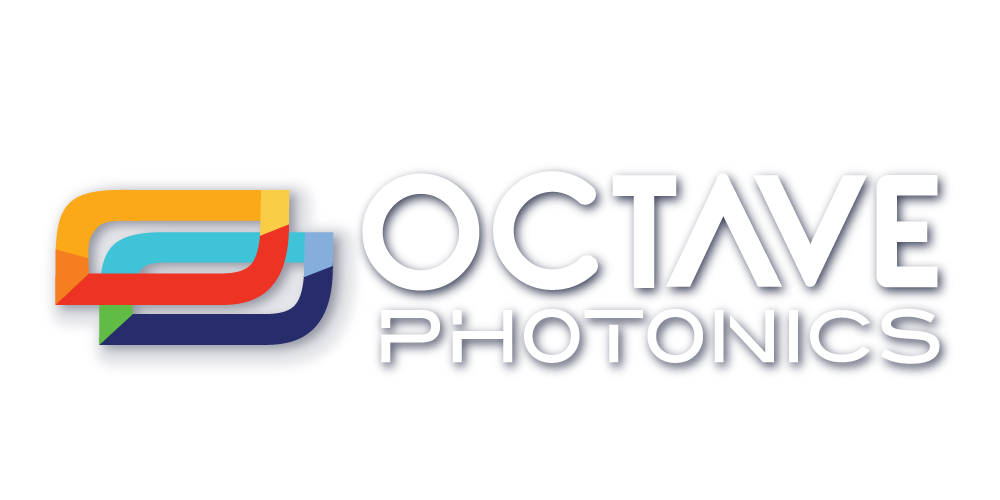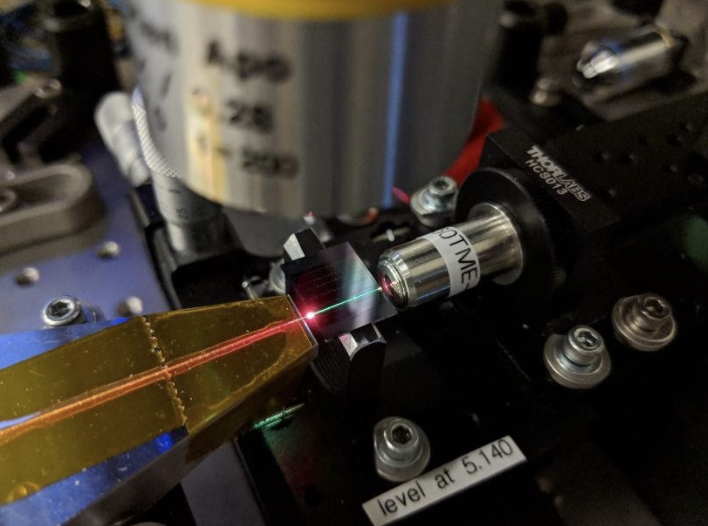Nonlinear Integrated Photonics
Figure 1. Nonlinear integrated photonics in action. Here, a nonlinear optical waveguide pumped with infrared light glows with the visible light generated from the supercontinuum generation process. Inside the waveguide, the light is confined to an area of about 1x1 micron, which is about 10,000 times smaller than a human hair, and enables high intensities with low pulse energies.
Integrated photonics is the optical equivalent to the circuits that make up modern electronic devices. However, instead of routing electrons around a microchip, a photonic integrated circuit (PIC), guides light through nanoscale “waveguides”. PICs can be fabricated at high volumes and low per-unit costs on lithographically patterned semiconductor wafers.
In nonlinear integrated photonics, advanced functionality can be added to PICs through carefully engineered interactions between light and the waveguiding material. At Octave Photonics, we focus on two nonlinear processes: supercontinuum generation and Kerr-soliton frequency comb generation.
Many material platforms can be suitable for nonlinear photonics, depending on the application. At Octave we work primarily with amorphous tantala (Ta2O5), which has a broad transparency window spanning from the UV to the far infrared, high nonlinearity, and low film stress for easy integration with other materials.
For both straight waveguides and resonators used in nonlinear applications, precise knowledge of the waveguide geometry and refractive index profile is necessary to accurately predict the device output spectrum. For example, the plot below shows a comparison of spectra from supercontinuum devices with different geometries.
Figure 2. Experimentally observed supercontinuum generation from nonlinear waveguides. For these straight waveguides, the height of the device is the same but the width is varied from 1200 nm to 2500 nm. The input pulses were approximately 200 fs pulses from a 1560-nm erbium-fiber laser. Supercontinuum generation with nanophotonic devices provides access to a broad range of wavelengths. Additionally, these broad spectra can be generated with significantly less pulse energy than is required by traditional nonlinear fibers.
Octave Photonics can design waveguides to meet the needs of specific applications. Contact us today for more information.


